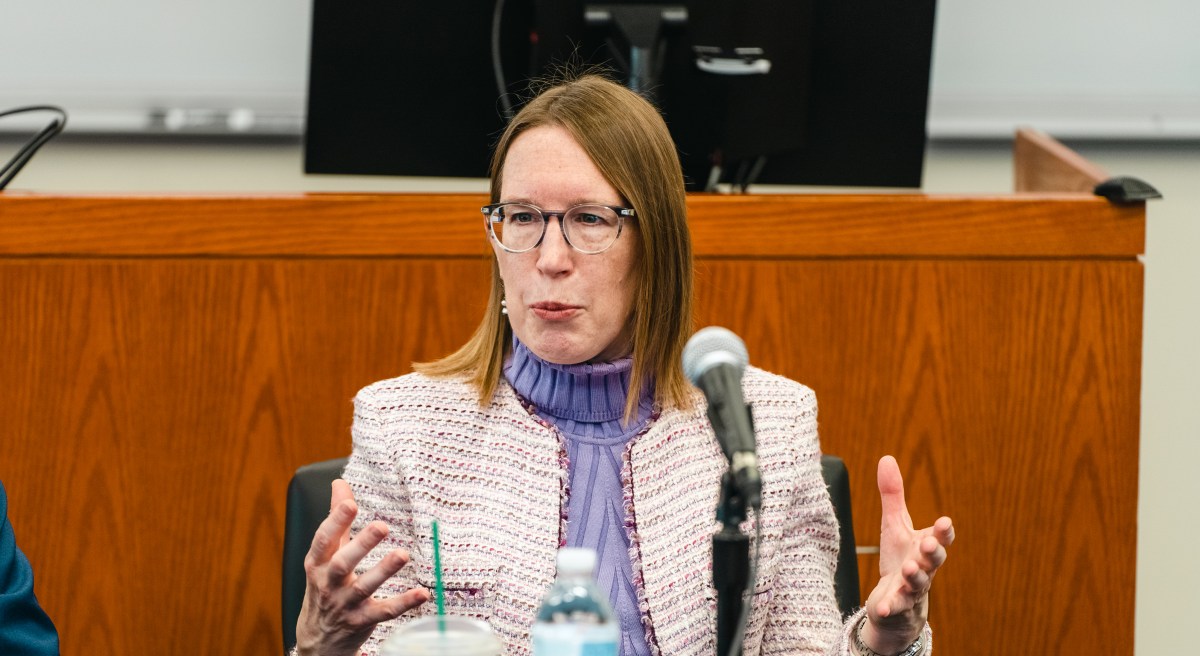It’s been almost 3 years since SEC commissioner Hester Peirce released her updated Token Safe Harbor Proposal 2.0, but she isn’t giving up.
© 2024 TechCrunch. All rights reserved. For personal use only.
The work of creating crypto- and investor-friendly legal frameworks in the United States continues. Thankfully for the web3 community, they have friends in high places.
It’s been almost three years since Hester Peirce, a commissioner of the U.S. Securities and Exchange Commission (SEC), released her updated Token Safe Harbor Proposal 2.0.
While the proposal hasn’t made headway in its prior forms, the commissioner is not giving up. “I think we would definitely need a 3.0 version if the government wants to keep crypto innovation alive in the U.S.,” she said during an exclusive fireside chat with TechCrunch at Georgetown University’s McDonough School of Business.
“There’s room for something to address the legitimate concerns that crypto-skeptics have, while addressing the legitimate concerns of innovators,” Peirce added.
The proposal’s previous versions aimed to “answer the question a lot of people had” surrounding the issuance of tokens, Peirce said. She explained that she built an earlier iteration of the concept after the initial coin offering (ICO) boom of 2017, when a lot of startups launched their own tokens, and there was “not a lot of disclosure around them.”
The safe harbor plan aimed to provide initial development teams with a three-year grace period during which they could participate in and create a decentralized network and be exempt from “registration provisions of the federal securities laws so long as certain conditions are met,” according to a GitHub document.
Peirce’s proposal aimed to require people to make disclosures for the initial period when they were selling tokens. From there, the idea was that “if the blockchain was really decentralized, so that no one had any more information [i.e., insider information] than anyone else, the disclosures wouldn’t be necessary anymore because all the information would be out there and available to anyone.”
While the commissioner said she hasn’t laid out the details for 3.0 yet, she is open to people tossing ideas her way. “I welcome ideas not only on the Token Safe Harbor, but more generally — if the SEC were to wake up tomorrow and say, ‘We want to take a more productive approach,’ what would ideas look like [and] where would we need to spend our time?”
It’s unreasonable to expect a new token project to have the same kind of disclosures and legal understanding as a company that’s been around for 15 years and is doing an IPO, Peirce thinks. “There’s just a real mismatch between the expectations that some people would like to put on these token projects and the reality,” Peirce said. “The result is, we end up in the worst of both worlds: We don’t get any disclosure and we get companies moving outside the U.S.”
Crypto’s developer ecosystem is continuing to expand globally, with 74% of developers outside of North America, according to Maria Shen, general partner at Electric Capital. As a result, the share of U.S. blockchain active developers declined to 24% last year, down from 40% in 2017, and fell 5% from the previous year, according to the firm’s 2023 developer report.
“I think the message that has been sent is that it’s really complicated to do business in the U.S.,” Peirce said. “So a lot of people are looking elsewhere or looking to just do something different, and I think that’s problematic.”
If there aren’t clear rules, it makes it harder for both startups and regulators to sort through what’s good versus bad “by the book,” she added.
“People spend a lot of time spinning their wheels thinking about regulation, which they could spend thinking about what real things could be done with the technology,” Peirce said.
She joked that it would be “very optimistic” to assume there’s a “new day dawning at the SEC” after the agency approved 11 spot bitcoin ETF issuers last month. But on the flip side, she added, “We need to be ready to go when that day happens.”
This story was inspired by an episode of TechCrunch’s podcast Chain Reaction. Subscribe to Chain Reaction on Apple Podcasts, Spotify or your favorite pod platform to hear more stories and tips from the entrepreneurs building today’s most innovative companies.
Connect with us:
On X, formerly known as Twitter, here.
Via email: chainreaction@techcrunch.com

Leave a Reply